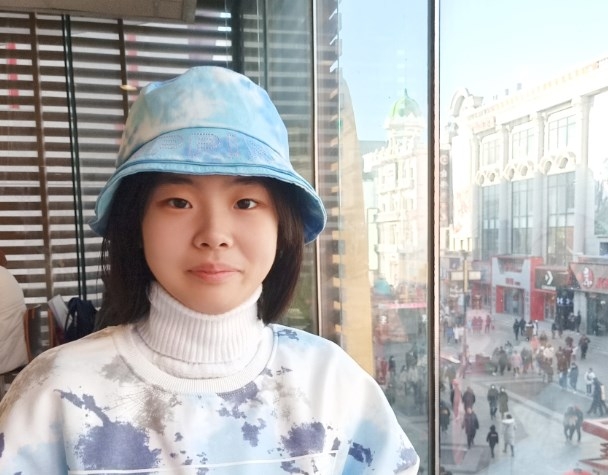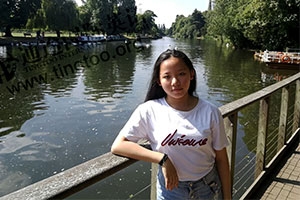托福閱讀總結(jié)題分析
發(fā)布時(shí)間:2017-04-13 22:58:00 關(guān)注量:6174次
托福閱讀題型當(dāng)中,,總結(jié)題一道,,而且是出現(xiàn)在最后一道,此時(shí)時(shí)間已剩不多,,這又是一道多分大題,,很多考生會(huì)很緊張,特別是文章重點(diǎn)信息已經(jīng)忘記,,甚至有可能原文看得不是很明白,,都會(huì)影響總結(jié)題的答案選擇。如果抓住總結(jié)題答案的特點(diǎn),,考生會(huì)發(fā)現(xiàn)它其實(shí)并沒那么難,,即便原文看得不是很懂,一樣可以做出答案,。既然是總結(jié),,那就意味著答案得是文章主旨,或是主旨內(nèi)容的一個(gè)分支,。對(duì)于小結(jié)題,,最大的難點(diǎn)在于要區(qū)別開主旨的分支和細(xì)節(jié)。本文是由沈陽托福培訓(xùn)通途國際英語的Trista老師為同學(xué)們總結(jié)的,,希望對(duì)托福備考的同學(xué)有所幫助,。我們以下面兩道題為例
WINSLOW HOMER
Winslow Homer, one of the most prominent nineteenth-century painters, was responsible for raising watercolor to Its position as an important medium in American art. Homer was s master of watercolor, and his best watercolor paintings equal his larger oil paintings in both structure and intensity. Through long practice, Homer understood and exploited the requirements of watercolor, which he applied where most appropriate-to the recording of immediate experience. He had great powers of visual analysis and never looked at a scene without seeing its underlying structure.Some of Homer's watercolors of the Adirondack woods, with their complicated weaving of vertical tree trunks against a background of deep autumnal tones, are demonstrations of masterful completeness. In one particular Adirondack painting, The Blue Boat (1892), all elements come together with perfect unity: me deep blue of the boats hull, the green and gold landscape, the alertness of the fishermen, the brilliant clouds and their reflections on the water. Furthermore. Its design unites the structural elements with the artist's enjoyment of marking and coloring the paper-all are blended as though In a single moment of vision and action.
The painter Winslow Homer made watercolor an important medium in American art.
| l |
| l |
| l |
B. Homer is best known for his dramatic oil paintings of seascapes.
C. His understanding of structure is shown in watercolors of masterful completeness
D. Winslow Homer was born in Massachusetts in 1836,
E. The Blue Boat is a watercolor painting of fishermen in a boat on the water.
F. Upper's Adirondack watercolors combine structural elements and color in perfect unity.
解析:文章的主旨很容易抓住,即對(duì)Winslow Homer 和其貢獻(xiàn)的介紹
A C F 很明顯講的是Winslow Homer和water color之間的聯(lián)系,。
B 不是oil painting D 原文沒有提及的信息 E 是某個(gè)水彩的作品內(nèi)容,,屬于細(xì)節(jié)
CULTURAL EVOLUTION
The history of life is the story of biological evolution on a changing planet, and at no time has change ever been as rapid as In the age of humans. The evolutions of humans and their culture has had enormous consequences, making humans a new force in the history of life.Cultural evolution has occurred in stages, beginning with the nomads who hunted and gathered food on the African grasslands two million years ago. These hunter-gatherers made tools, organized communal activities, and divided labor. Next came the development of agriculture m several pans of the world 10 to 15 thousand years ago. Agriculture Jed to permanent settlements, the first cities, and trade among societies. An important cultural leap was the Industrial Revolution, which began in the eighteenth century. Since then, new technology has escalated exponentially, and so as the human impact on the planet.
Throughout this cultural evolution, from simple hunter-gatherers to high-tech societies, humans have not changed much biologically. Our knowledge is stored not in our genes but in the product of thousands of years of human experience.
Cultural evolution has enabled us to defy our physical limitations and shortcut biological evolution. We no longer have to wait to adapt to our environment through natural selection; we simply change the environment to meet our needs. We are the dominant species of life and bring environmental change whatever we go.
Cultural evolution has made humans a new force in the history of life.
| l |
| l |
| l |
B. There have been a several stages in the evolution of human culture.
C. The development of agriculture 10 to 15 thousand years ago resulted in permanent settlements, the first cities and trade
D. Human technology has advanced rapidly, increasing the human role in environmental change,
E. Cultural evolution has allowed humans to change their environment, thus avoiding the need for biological evolution.
F. Humans are changing the world faster than many other species can adapt.
解析:文章的主旨,即人類文明史上的進(jìn)化
B D E 講的都是人類進(jìn)化的某個(gè)階段與人類的關(guān)系,。
A Biology是最重要的,,意思有偏差 C 屬于農(nóng)業(yè)改革的細(xì)節(jié) F 文中沒有提及的信息
本文由沈陽托福培訓(xùn)通途國際英語原創(chuàng),轉(zhuǎn)載請(qǐng)保留鏈接: http://quwanggou.net/TOEFL/yuedu/272.html













